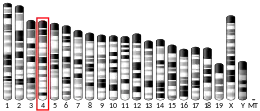| LINGO2 | |||||||||||||||||||||||||||||||||||||||||||||||||||
|---|---|---|---|---|---|---|---|---|---|---|---|---|---|---|---|---|---|---|---|---|---|---|---|---|---|---|---|---|---|---|---|---|---|---|---|---|---|---|---|---|---|---|---|---|---|---|---|---|---|---|---|
| Identifiers | |||||||||||||||||||||||||||||||||||||||||||||||||||
| Aliases | LINGO2, LERN3, LRRN6C, leucine rich repeat and Ig domain containing 2 | ||||||||||||||||||||||||||||||||||||||||||||||||||
| External IDs | OMIM: 609793 MGI: 2442298 HomoloGene: 17621 GeneCards: LINGO2 | ||||||||||||||||||||||||||||||||||||||||||||||||||
| |||||||||||||||||||||||||||||||||||||||||||||||||||
| |||||||||||||||||||||||||||||||||||||||||||||||||||
| |||||||||||||||||||||||||||||||||||||||||||||||||||
| |||||||||||||||||||||||||||||||||||||||||||||||||||
| Wikidata | |||||||||||||||||||||||||||||||||||||||||||||||||||
| |||||||||||||||||||||||||||||||||||||||||||||||||||
Leucine rich repeat and Ig domain containing 2 is a protein that in humans is encoded by the LINGO2 gene. [5]
References
- 1 2 3 GRCh38: Ensembl release 89: ENSG00000174482 - Ensembl, May 2017
- 1 2 3 GRCm38: Ensembl release 89: ENSMUSG00000045083 - Ensembl, May 2017
- ↑ "Human PubMed Reference:". National Center for Biotechnology Information, U.S. National Library of Medicine.
- ↑ "Mouse PubMed Reference:". National Center for Biotechnology Information, U.S. National Library of Medicine.
- ↑ "Entrez Gene: Leucine rich repeat and Ig domain containing 2". Retrieved 2014-03-31.
Further reading
- Ferreira RC, Pan-Hammarström Q, Graham RR, Gateva V, Fontán G, Lee AT, et al. (September 2010). "Association of IFIH1 and other autoimmunity risk alleles with selective IgA deficiency". Nature Genetics. 42 (9): 777–780. doi:10.1038/ng.644. PMID 20694011. S2CID 205356843.
- Wu YW, Prakash KM, Rong TY, Li HH, Xiao Q, Tan LC, et al. (June 2011). "Lingo2 variants associated with essential tremor and Parkinson's disease". Human Genetics. 129 (6): 611–615. doi:10.1007/s00439-011-0955-3. PMID 21287203. S2CID 23493765.
- Su FC, Chen CM, Chen YC, Wu YR (June 2012). "LINGO-2 polymorphism and the risk of Parkinson's disease in Taiwan". Parkinsonism & Related Disorders. 18 (5): 609–611. doi:10.1016/j.parkreldis.2011.11.013. PMID 22123311.
- Ichikawa S, Koller DL, Padgett LR, Lai D, Hui SL, Peacock M, et al. (August 2010). "Replication of previous genome-wide association studies of bone mineral density in premenopausal American women". Journal of Bone and Mineral Research. 25 (8): 1821–1829. doi:10.1002/jbmr.62. PMC 3153352. PMID 20200978.
- Vilariño-Güell C, Wider C, Ross OA, Jasinska-Myga B, Kachergus J, Cobb SA, et al. (October 2010). "LINGO1 and LINGO2 variants are associated with essential tremor and Parkinson disease". Neurogenetics. 11 (4): 401–408. doi:10.1007/s10048-010-0241-x. PMC 3930084. PMID 20369371.
- Carim-Todd L, Escarceller M, Estivill X, Sumoy L (December 2003). "LRRN6A/LERN1 (leucine-rich repeat neuronal protein 1), a novel gene with enriched expression in limbic system and neocortex". The European Journal of Neuroscience. 18 (12): 3167–3182. doi:10.1111/j.1460-9568.2003.03003.x. PMID 14686891. S2CID 42086715.
This article is issued from Wikipedia. The text is licensed under Creative Commons - Attribution - Sharealike. Additional terms may apply for the media files.



